A kneeling woman supports the drum on her head and presents before her her child, a little boy very curiously dressed in a complete colonial outfit, shoes included! (French colonization in Guinea began in 1895 and ended in 1958).
Unlike most African ethnic groups, Baga women occupied a prominent place in their society. Gathered in supportive groups called "A-tekan", those who had given birth were powerful, and only they could use and play these drums, during ritual, religious or social ceremonies...
The architecture of the drum refers to the habit women had of carrying on their heads heavy baskets or pottery filled with salt or rice.
The kneeling woman is adorned with jewelry, necklace, chains crossed on the chest and decorated with bells, belt, arm bracelets. Her neck is long, her bearing, haughty. Her very elaborate hairstyle is magnificently represented; she wears scarifications on her face.
Her chest is firm and pointed, it is undoubtedly a young mother, who preciously embraces her child... It is also worth noting that her knees do not touch the base!...
The skin of the drum, of animal origin, is fixed by strips of this same skin and plant ties, by elaborate and aesthetic knots, around large wooden pegs (one is missing, but the skin has remained well stretched and the drum resonates perfectly). This skin is in excellent condition...
This drum was once broken and glued back together in several places, base, arm, and part of the right forearm is missing.
The frenzied Islamization of Guinea which began in 1956 was disastrous and destructive for the populations and for all the ritual objects of the Baga culture; some were able to escape destruction and were brought back mainly to France before Guinean independence in 1958.
Scratches are also to be noted on the 2 noses, and on the child's feet. A careful look also reveals very small holes on the top of the woman's bust, which do not seem to be the work of xylophages... perhaps grigris or amulets were once fixed there?...
The polychromy with earthy and natural tones is generally in good condition.
More photos on request by email.
The size of the object requires sending by carrier, in addition.
Height = 115 cm; width at the arms = 30 cm; total depth = 33 cm.
Weight = 16.200 kg


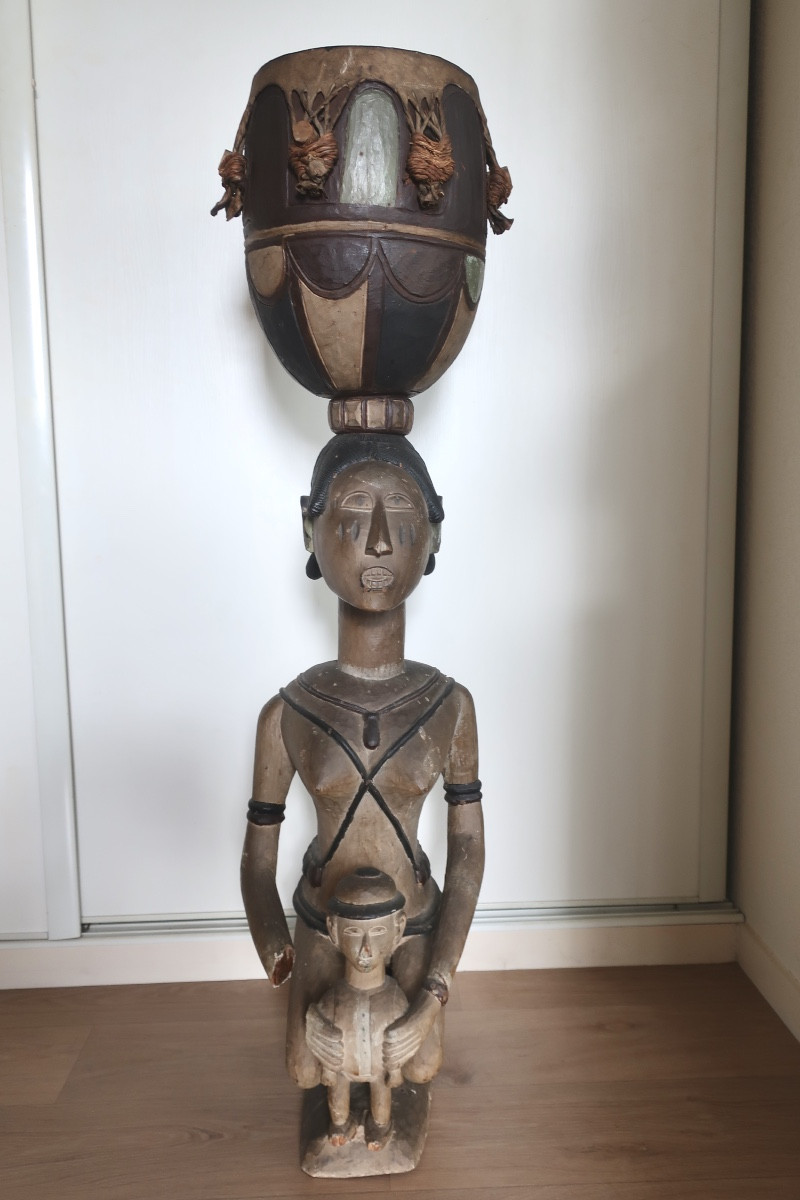
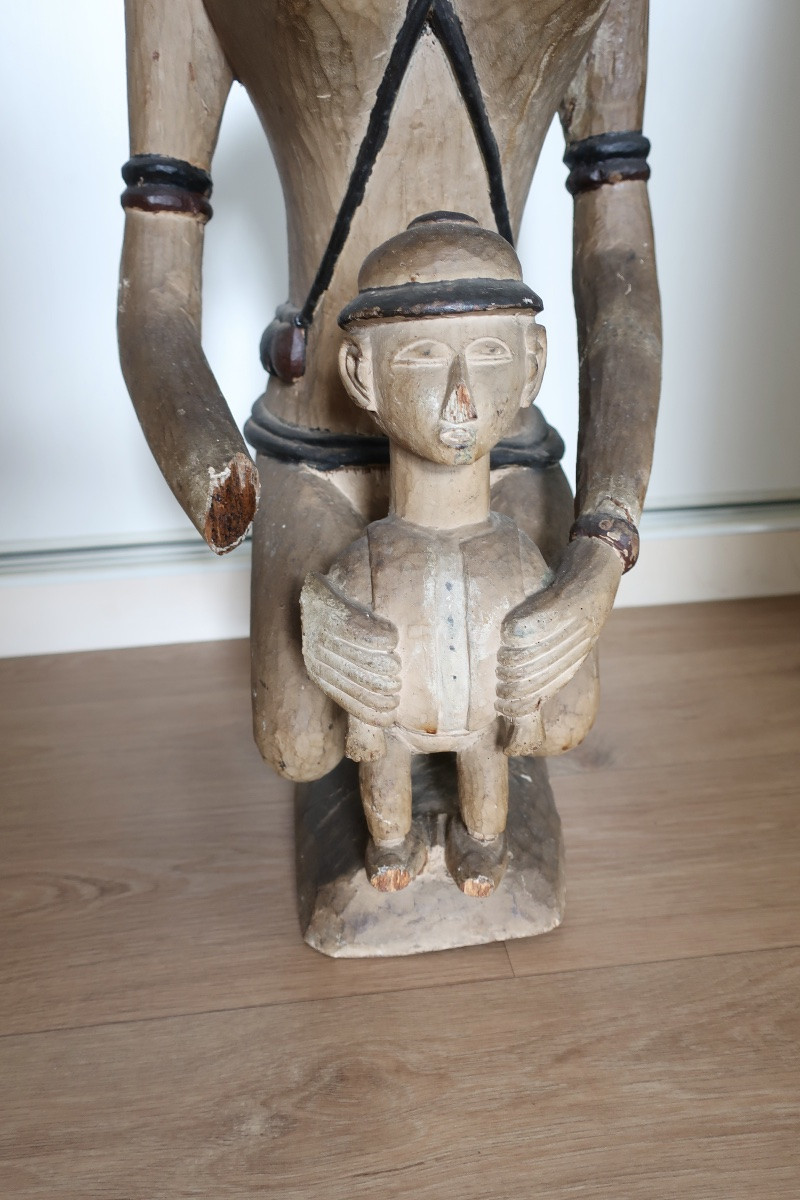


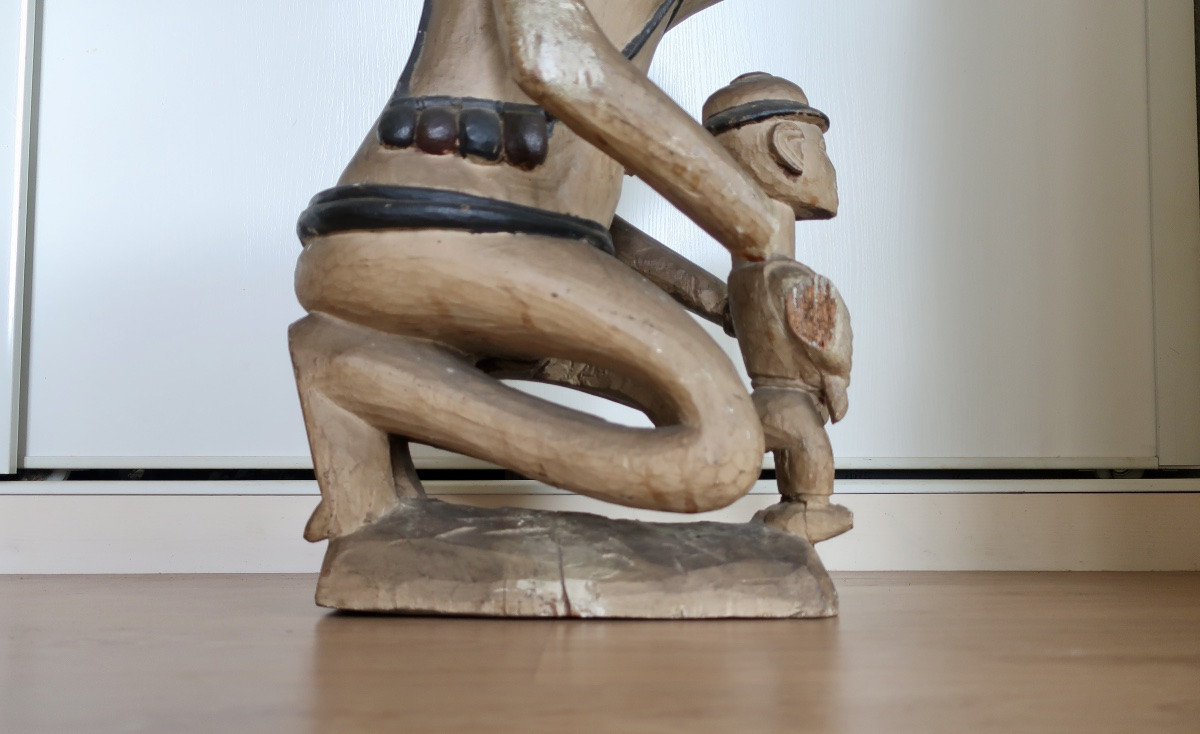
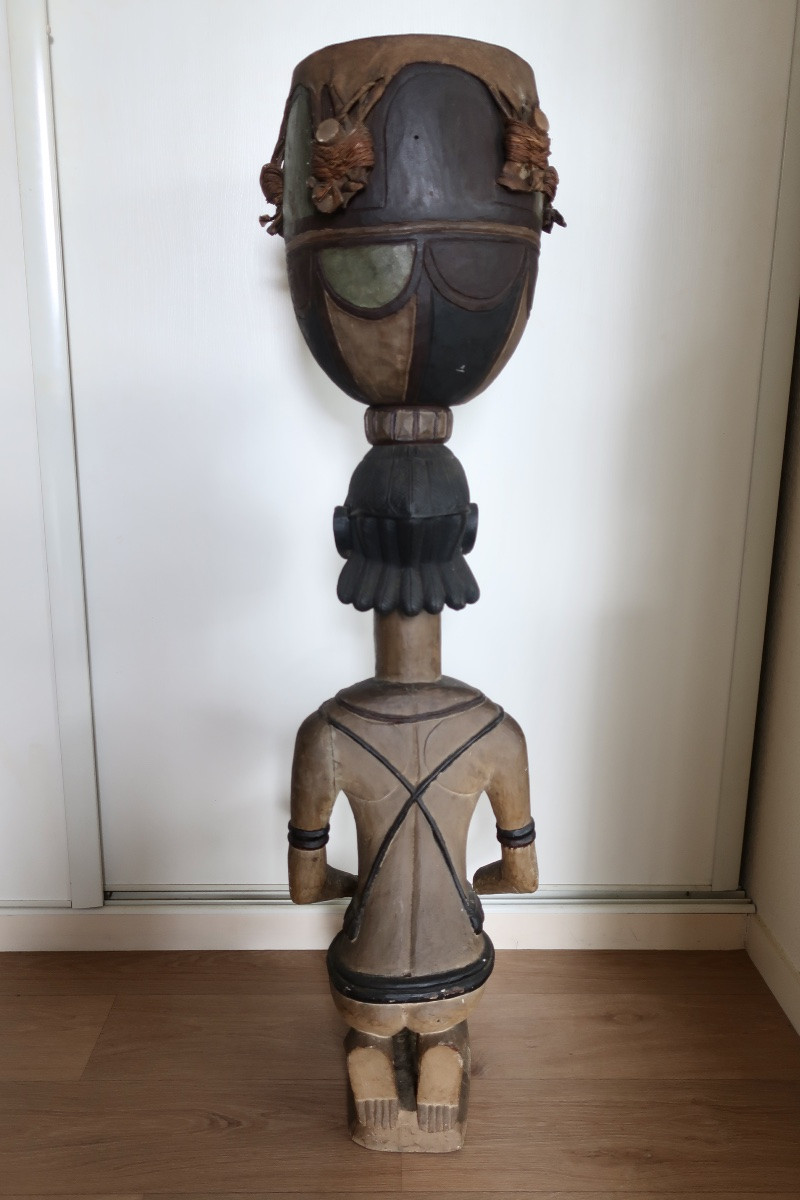
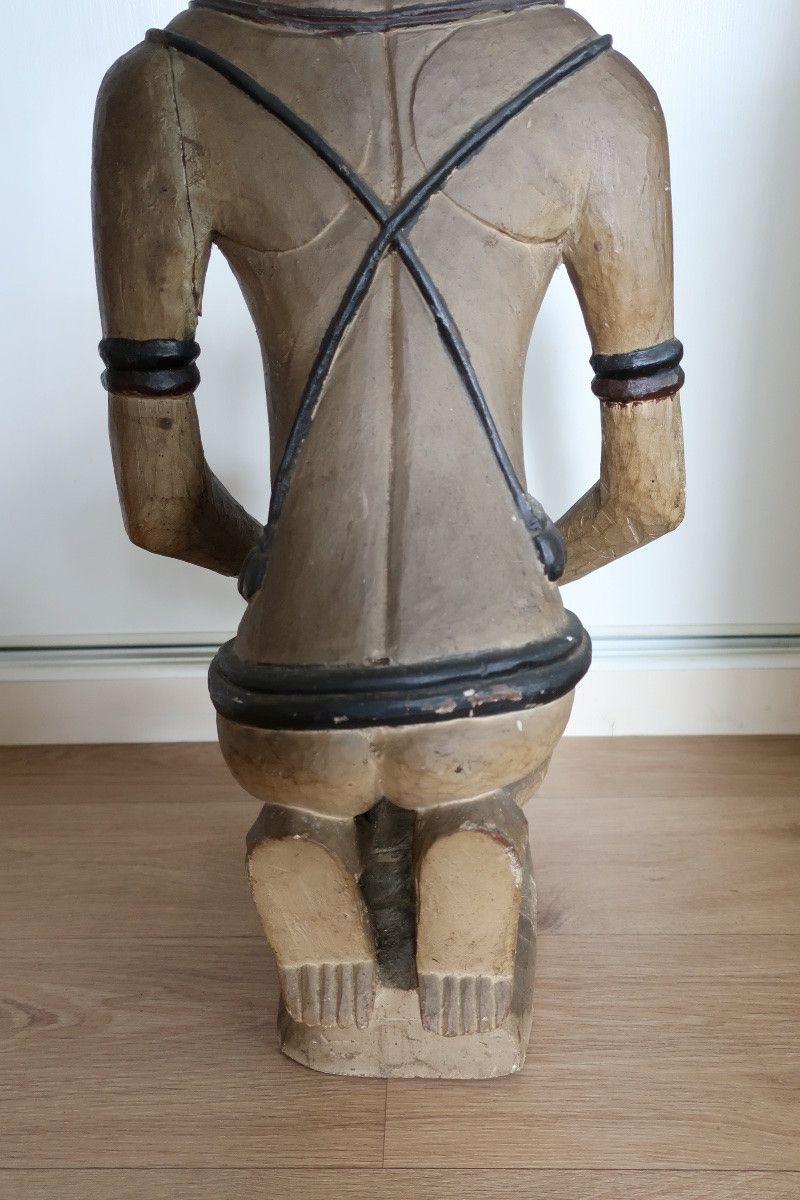
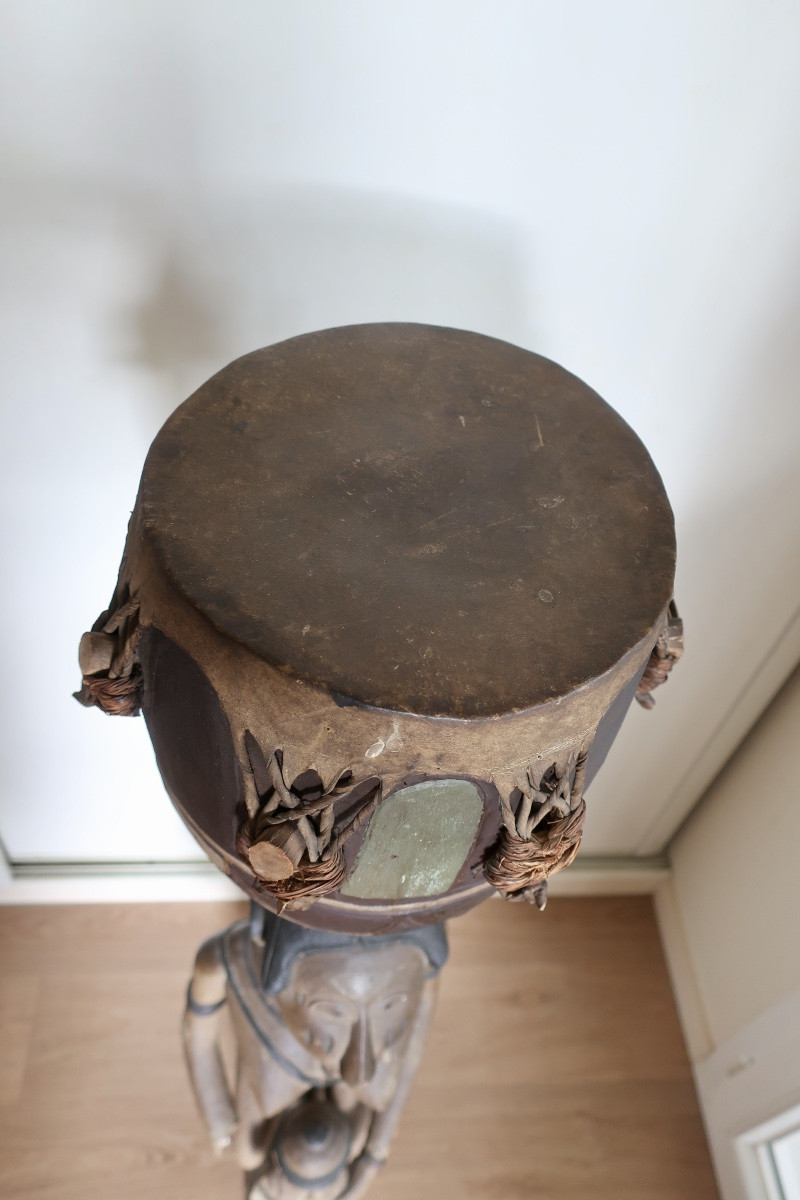

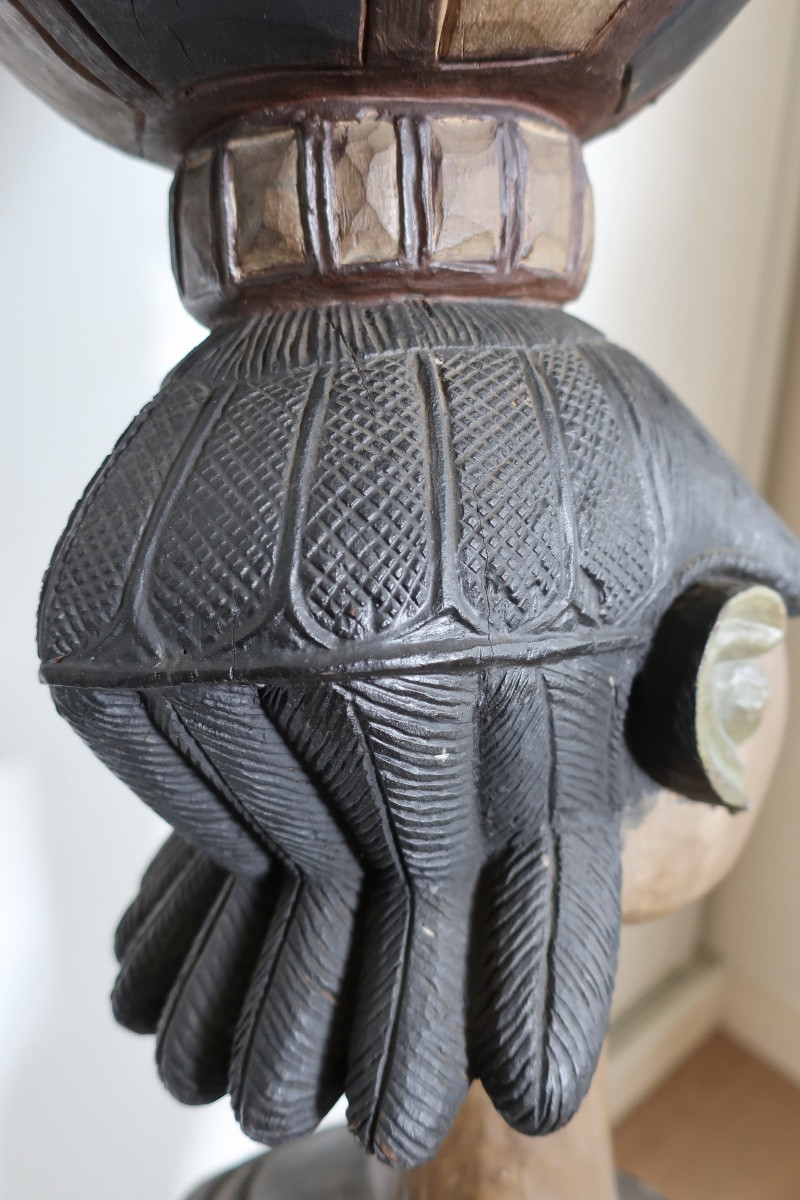






























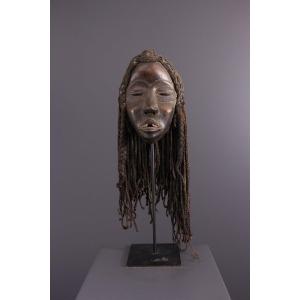



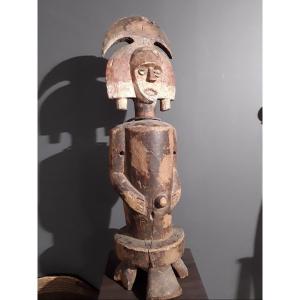



 Le Magazine de PROANTIC
Le Magazine de PROANTIC TRÉSORS Magazine
TRÉSORS Magazine Rivista Artiquariato
Rivista Artiquariato